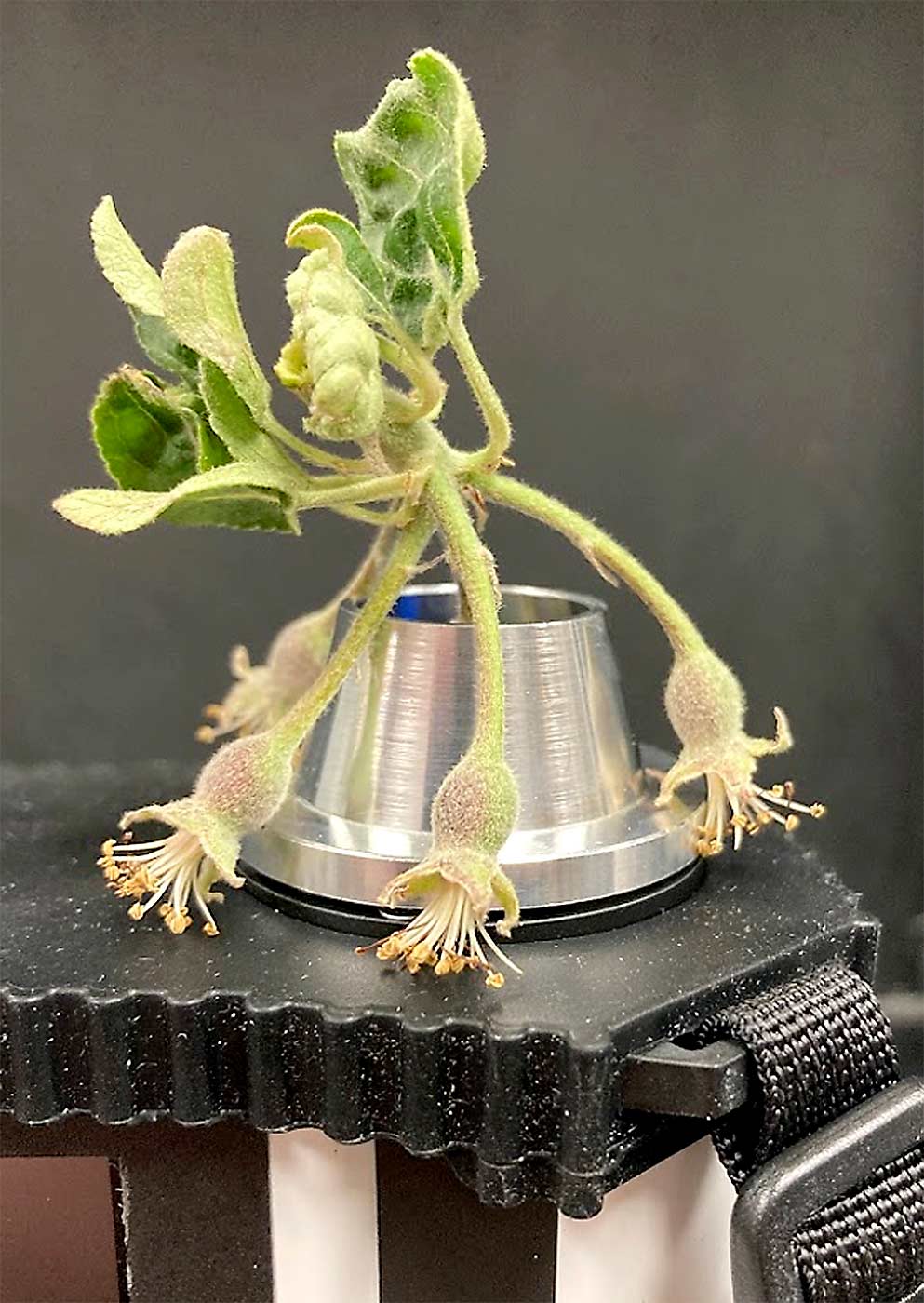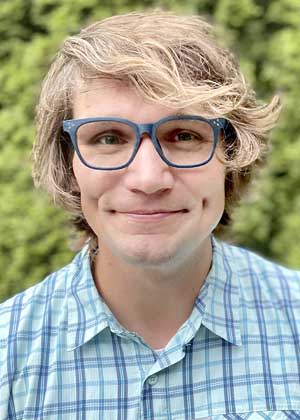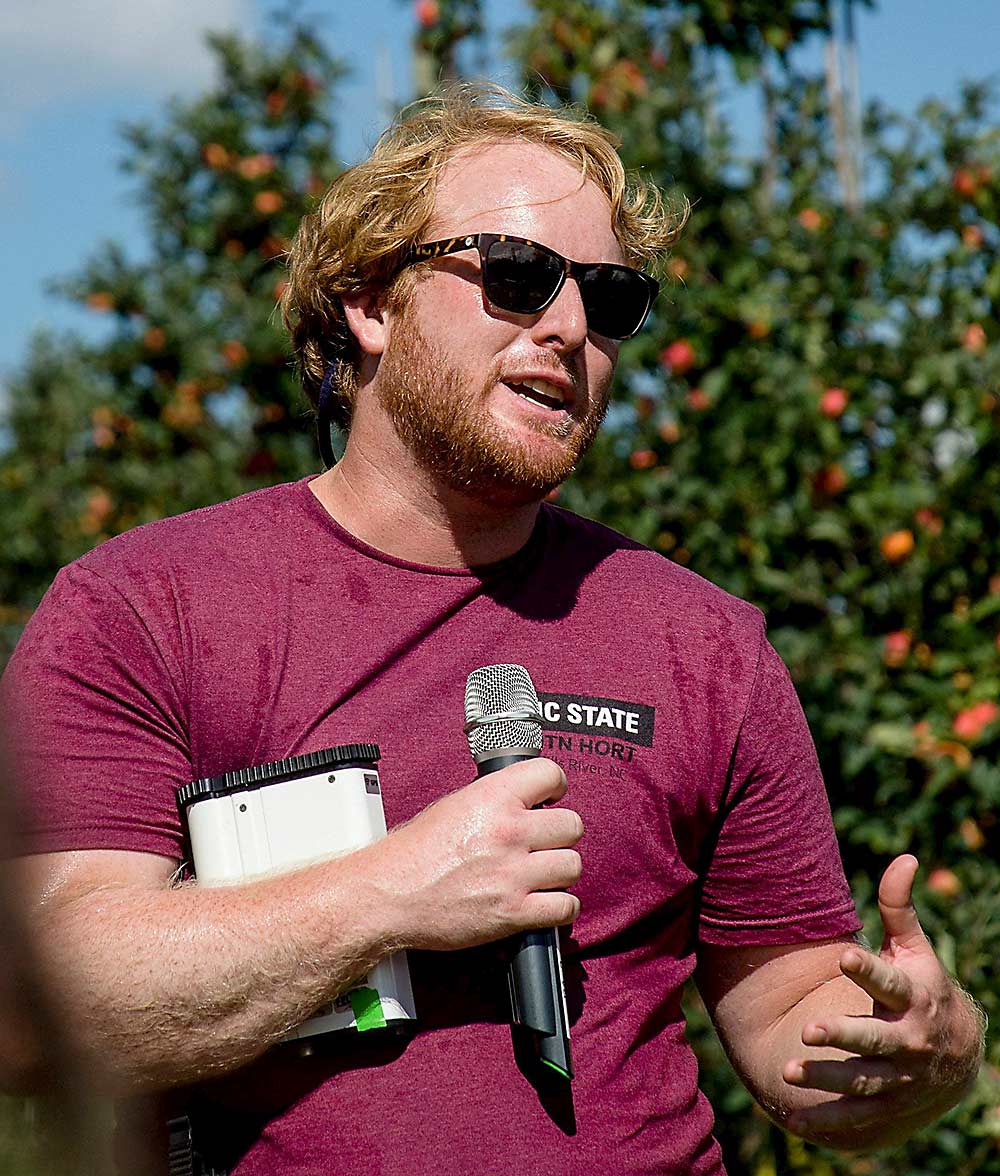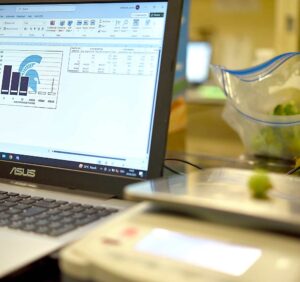
Precision apple crop load management requires the ability to determine the effectiveness of thinning sprays soon after they’re made, so you know if you need to spray again.
But finding optimum tools to determine that efficacy is an ongoing search. Under the umbrella of the Precision Apple Cropload Management (PACMAN) project — a nationwide effort funded by the U.S. Department of Agriculture’s Specialty Crop Research Initiative — researchers are studying multiple ways to predict which fruitlets will abscise and which will persist.
North Carolina State University assistant professor Tom Kon and postdoctoral research scholar Jimmy Larson decided to try a handheld spectrometer. After two years of trials in North Carolina orchards, the technique they developed shows high prediction accuracies over a range of fruitlet abscission potential.
The spectrometer they used, a handheld produce-quality meter made by Felix Instruments, uses light reflectance to estimate different fruit characteristics. It can be carried into the orchard to scan fruitlets on the trees.
Larson, who led the project, measured each fruitlet with the spectrometer by placing the calyx end on the lens. The lens shoots a beam of light at the fruitlet, which absorbs the light and reflects it back to the meter. The meter measures the light reflectance in the visible and near-infrared portion of the light spectrum and uses that measurement to estimate factors such as chlorophyll and water content in the fruitlet.

Trials were conducted in 2021 and 2022 in two commercial orchards in western North Carolina. Researchers used the device on Honeycrisp fruitlets during the traditional thinning window, when fruitlets are 8 to 12 millimeters. They expanded to Fuji, Red Delicious, Gala and Granny Smith in 2023 and also took measurements during the “rescue timing” window at 20 millimeters. They’re still compiling the 2023 data, which was collected from North Carolina, New York and Michigan orchards, Larson said.
The 2021–22 data showed that persisting fruitlets had lower reflectance than abscising fruitlets. Persisting fruitlets are generally larger, with more total chlorophyll content and greater light absorption than abscising fruitlets. Persisting fruitlets also had greater estimated water content. Additional research could determine whether relative water content is an early indicator of abscission potential, according to the researchers.
As a comparison, they used the standard fruitlet growth rate model, which measures the relative change in diameter of a given fruitlet over time. While precise, the model requires multiple measurements of fruitlets using calipers — an onerous task for growers. And in the Southeast, it doesn’t reliably predict fruit set until about nine days after spray application, Larson said. A technique that uses a single sampling period and can make earlier thinning predictions would be easier for growers to adopt.

Trial results from both years showed the Felix meter’s prediction accuracy was greater than 90 percent within three days of application — a promising level of accuracy, according to the researchers.
One of the drawbacks of this new reflectance technique: It can only measure one fruitlet at a time. If the instrument could somehow be automated, mounted on an ATV and driven down orchard rows to make measurements, it would be a “leap forward” for the technique, said Terence Robinson, Cornell University tree fruit physiologist and director of the PACMAN project.
Larson said technologies that can measure reflectance on a whole-tree or orchard scale would likely increase grower adoption.
The NCSU researchers plan to continue studying the spectrometer approach on multiple cultivars in multiple regions, at different chemical thinner timings and chemistries. Their work was partially funded by a North Carolina Specialty Crop Block Grant.
—by Matt Milkovich








Leave A Comment